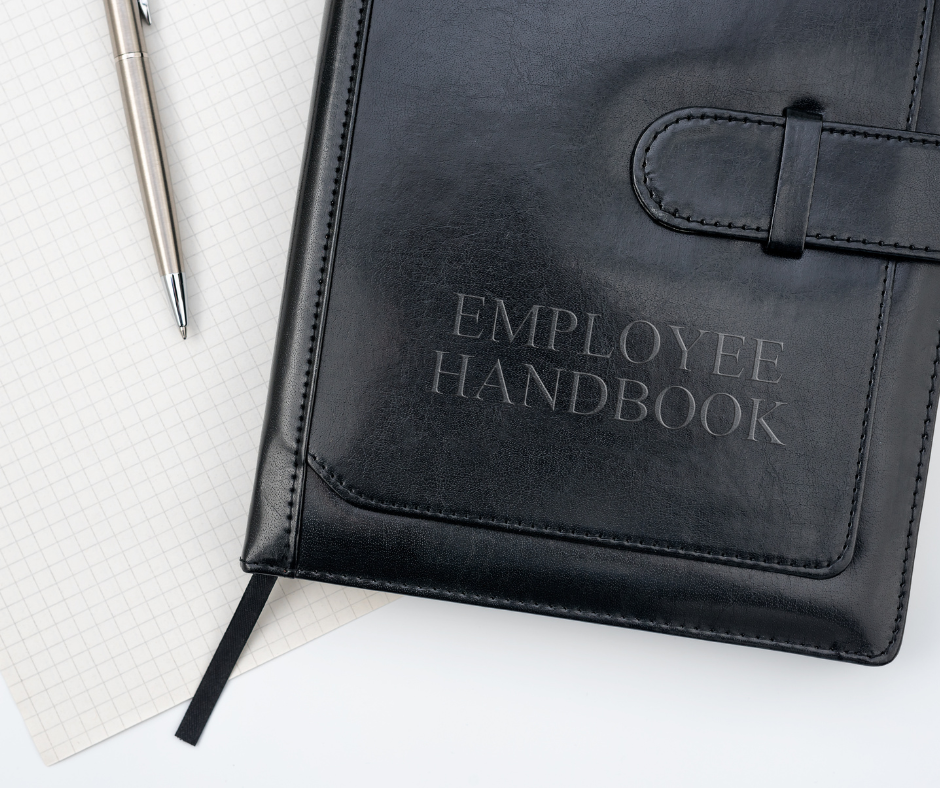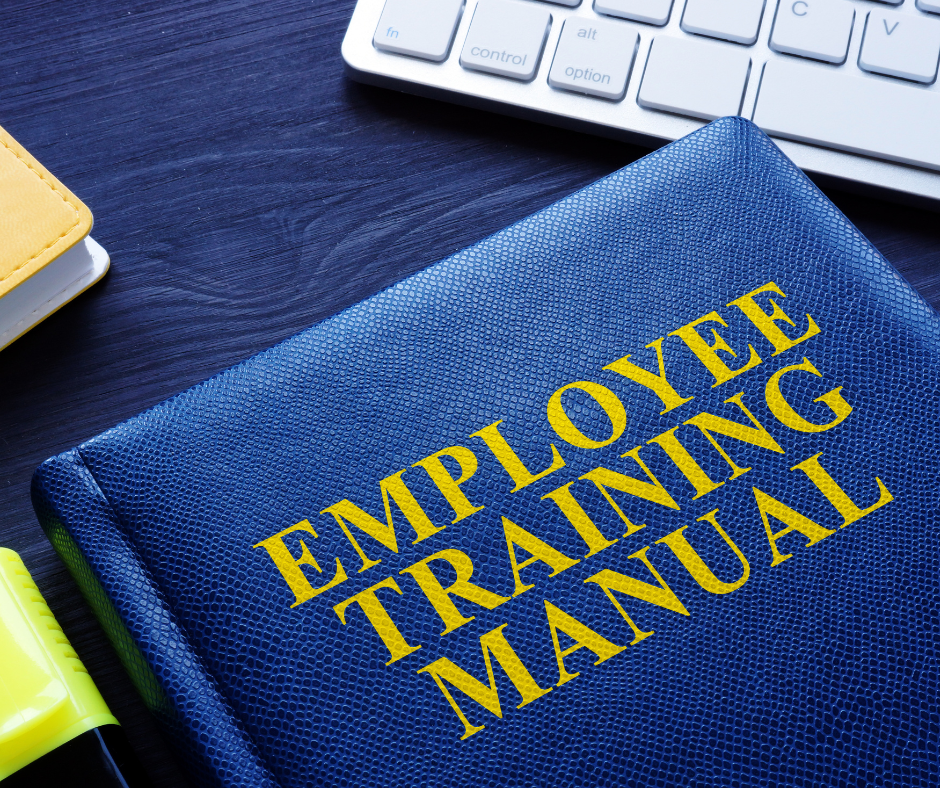
Key Takeaway:
- Employee handbooks are crucial for scenic and sightseeing transportation companies as they provide employees with clear guidelines and expectations, leading to better performance and compliance with company policies.
- The contents of an effective employee handbook should include company policies and procedures, work hours and overtime policies, leave policies, safety and security policies, performance review and employee discipline policies, and benefits and compensation policies.
- To create an effective employee handbook, businesses should customize the handbook for their specific needs, keep it simple and clear, ensure consistency and compliance with relevant laws and regulations, and regularly update the handbook to reflect any changes in policies or procedures.

Importance of Employee Handbooks for Scenic and Sightseeing Transportation Companies
Employee Handbooks are crucial for Scenic and Sightseeing Transportation Companies as they serve as a guidebook for employees. The handbook provides a clear understanding of company policies, procedures, and expectations. It is a useful tool for new hires to understand their job responsibilities, benefits, and company culture. It also offers a method for quick reference for employees to review policies and procedures. Companies that employ seasonal workers also benefit from employee handbooks as they can distribute the necessary information to their staff in a concise and consistent manner.
By having an employee handbook, Scenic and Sightseeing Transportation Companies can reduce misunderstandings and potential disputes that may arise between employees and management. The handbook ensures that all staff receives the right information in writing about the company’s expectations on attendance, behavior, dress code, and more. It outlines the disciplinary process and can prevent legal complications if employees are terminated for misconduct. It also protects the company from liability in certain situations.
One important aspect of employee handbooks that is often overlooked is keeping them up to date. It is crucial to review and update the handbook annually to ensure that the policies and procedures reflect current employment laws and regulations. This will also enable the company to keep up with any changes in their business practices, benefits, or work culture.
In the past, some Scenic and Sightseeing Transportation Companies may have neglected employee handbook development because they were focused on cost and time. However, investing in a well-written and current employee handbook can save a lot of money on legal disputes and increase employee morale and commitment. Employee Handbooks for Securities, Commodity Contracts, and Other Financial Investments, and Related Activities companies have become a standard practice, and now Scenic and Sightseeing Transportation Companies are starting to realize the importance of having one.

Contents of Employee Handbook
This section offers complete guidance on company policies and procedures, working hours, leave, security and safety, performance reviews and benefits and compensations. It provides an effective employee handbook for scenic and sightseeing transportation companies.
Company Policies and Procedures
The guidelines outlined in the policy and procedure manuals ensure proper business conduct. These company rules are put in place to guarantee professionalism and respect within scenic and sightseeing transportation organizations.
With a clear set of standards laid out, employees have a reference point on expected behavior, job duties, and ethical obligations. Topics covered may include expectations around attendance, communication, dress code policies, benefits eligibility, safety guidelines, performance evaluations and disciplinary procedures.
The handbook should include information specific to individual departments such as reservations or maintenance. When reviewing procedures ensure that they support the company’s goals but remain realistic. Employees must feel adequately informed of expectations while retaining their ability to fulfill their roles beyond stated plans.
Consider updating manuals regularly to ensure they align with current industry best practices. Invest into employee feedback by allowing them to alert management of any issues encountered with current policies or procedures. This encourages trust while increasing engagement and productivity within teams. Looks like you’ll have plenty of time to sightsee during those unpaid overtime hours.
Work Hours and Overtime Policies
Within our employee handbook, we outline our guidelines surrounding the duration and compensation for employee labor. Our policies detail regulations regarding shift length, breaks, meal periods, overtime eligibility, and holiday pay. We ensure that all employees are knowledgeable on these policies and follow them accordingly to maintain a safe and productive work environment.
We guarantee that each employee is compensated fairly for their time at work by compensating for any overtime performed in accordance with local labor laws. Our policy also requires approval from management before workers can perform any overtime hours. In addition to this, we recompense double pay operations that fall on designated holidays.
It’s important to note that employees should not assume they’re eligible for overtime unless explicitly stated in their contract. It is also crucial to track all breaks during working hours accurately. One incident occurred where a driver filed a complaint due to the manager neglecting their request about having more flexible work hours straight after returning from an injury in which Overtime became a problem regarding his condition. The subsequent internal HR investigation conducted resulted in amendments made to the Work Hours Policy section of the employee handbook suitably accommodating such scenarios. Taking a sick day is like playing hooky, except now you’re an adult and your mom isn’t covering for you.
Leave Policies
In this section, we’ll discuss the various types of paid and unpaid absences for employees.
- Personal Time Off (PTO) – Employees can take time off for personal reasons, including vacation, illness or any other reason.
- Sick Leave – If an employee cannot come to work due to illness, they are eligible for sick leave.
- Bereavement Leave – In case of a death in the family or close friend, employees can take leave without it affecting their employment status.
- Military Duty Leave – If an employee is called for military duty, they are entitled to unpaid leave from work.
- Maternity/Paternity Leave – Employees expecting children can take paid maternity/paternity leave to care for a newborn or adopted child.
It is important to note that all leaves must be approved by management before being taken.
Additionally, employees who require extended absences may consider taking a leave of absence. The length of this type of leave will depend on the situation at hand. It is recommended that employees communicate with HR and management in such cases to ensure compliance with company policies and procedures.
Remember, the only thing more terrifying than a rollercoaster ride is reading the safety manual for one.
Safety and Security Policies
With a focus on the well-being and safety of passengers and employees, this section highlights the security measures in place to ensure smooth operations. This includes detailed protocols for handling emergencies and maintaining a safe environment onboard. The policies also address coordination with local law enforcement or security personnel, luggage screening procedures, and regular safety checks of vehicles.
It is crucial that all staff members understand these safety and security policies thoroughly to maintain compliance and prevent incidents. Additionally, periodic training sessions need to be conducted to update employees on any changes in regulations or practices.
To further enforce these policies, an anonymous reporting system is implemented where staff can report any concerns or suspicious activities without fear of retaliation. Such measures prioritize the well-being of both passengers and employees, resulting in successful operations with minimal mishaps.
One incident that highlights the significance of such policies was the attempted hijacking of a passenger bus by an armed individual. Thanks to proper emergency response protocols followed by company staff, passengers were evacuated safely before swift assistance from local authorities arrived on the scene. Such incidences highlight the necessity of implementing robust security measures while operating sightseeing transportation services.
I hope your performance review goes better than the last time I went on a scenic tour and got a one-star rating.
Performance Review and Employee Discipline Policies
The policies regarding employee discipline and performance evaluation are crucial in scenic and sightseeing transportation firms. Regular assessment of workforce performance ensures enhancement, job satisfaction and overall success of the business. In times of deviations, suitable measures should be taken to rectify such behavior from the team members.
The process of conducting a performance review needs to be fair, transparent, and consistent. Employers should provide constructive feedback on areas that need improvement, set achievable goals, recognize great work, and encourage course correction as required. Meanwhile, the employee discipline policies must follow legal guidelines for misconduct or violations and have an established corrective action plan based on severity.
A healthy working environment can be fostered through mutual respect between the management and staff with seamless decision-making processes while upholding ethical standards. The staff handbook creates a framework for managing relationships amongst colleagues while ensuring positive results for customers’ experiences.
Pro Tip: Encourage communication with employees regarding their performance by providing a platform for constructive feedback.
You may not see the sights, but at least you can see the benefits – a breakdown of compensation policies in this employee handbook for scenic and sightseeing transportation companies.
Benefits and Compensation Policies
The policies regarding employee perks and payments are an integral part of the operational manuals for scenic and sightseeing transportation companies. Such guidelines aim to establish standardization in the provision of competitive and fair rewards and remuneration for all employees. To streamline the management of salaries, benefits, and incentives across various job titles, a comprehensive approach is taken.
- The handbook covers eligibility criteria for insurance policies such as health, medical, dental, vision.
- Policies relating to different types of leaves are outlined such as sick leave, bereavement or compassionate leave, vacation time and family medical leave act.
- Guideline on retirement plans such as 401(k), pension schemes to assist employees with their future finance planning are included.
- Incentives related programs like annual bonuses or merit-based salary adjustments are defined.
- The employer also describes the steps to be followed by every team member while claiming reimbursements for business travel expenses.
It should be noted that the policies concerning employee benefits and work perks differ from company to company based on their budget allocation and objectives. Therefore, it is recommended to carefully review all provisions mentioned in this section before directly approaching HR staff.
Pro Tip: Understanding employee benefits should take center stage when looking for long-term employment opportunities in any sector!
Creating an effective employee handbook is like trying to make a salad that everyone likes – you have to choose the right ingredients and dress it up just enough to make it appealing.

Tips for Creating an Effective Employee Handbook
Welcome to our scenic and sightseeing transportation business! We are delighted to have you as part of our team. Please take the time to read and understand this employee handbook. It is written to provide you with an understanding of our expectations, policies, and benefits.
We are committed to being consistent and compliant in our business practices. We will follow all applicable laws and regulations and expect our employees to do the same. If you have any concerns about compliance, please bring them to the attention of your supervisor or HR immediately.
Attendance and punctuality are critical to the success of our business. We expect all employees to arrive on time for their scheduled shifts and to provide advance notice if they are unable to work. Proper grooming and attire are also expected when representing our company to the public.
We offer a range of benefits to our employees, including health insurance, paid time off, and retirement plans. Details on these benefits are available through HR.
We will update this handbook as necessary to ensure that it remains relevant and informative. Any updates or changes will be communicated to all employees in a timely manner.
Once again, we welcome you to our team and look forward to working with you.
Customize the Handbook for the Business
To create an effective employee handbook for scenic and sightseeing transportation companies, it is crucial to adapt the content to the unique demands of the business. By tailoring the handbook’s language, policies, and procedures to fit with your company’s brand voice, company culture, industry specifications, and local regulations, it ensures that new employees understand expectations from day one.
Besides customisation, seek support from internal teams such as legal counsel or HR specialists to stay updated on existing or revised laws that impact your business operations. In addition, consider incorporating a welcome letter or statement from top management giving insight into what makes your company a great place to work. These techniques help establish trust within your team and reduce liability since policies are carefully scrutinised.
Lastly, organise information in an engaging format using clear headings and formatting tools for readability. Providing examples of how customer interactions should be handled can also support workers’ professional development by providing clarity on job requirements.
To sum up, employee handbooks play a significant role in protecting businesses against legal liability while effectively communicating essential corporate policies. Creating a personalised booklet allows employers to craft their message stylistically and comprehensively. Businesses should strive towards creating truly customised messages that bridge communication gaps rather than taking one standard text approach suited for every organisation out there.
Your employee handbook should be easier to understand than a scenic mountain trail map.
Keep It Simple and Clear
To keep the employee handbook engaging and easy to comprehend, use a Semantic NLP variation of the heading ‘Keep It Simple and Clear’. A concise and straightforward language that avoids complex terms or legal jargon could make your handbook more accessible. Additionally, using bullet points and headings can help break up big blocks of text into smaller, readable sections.
Moreover, providing examples or scenarios could help employees understand what is expected of them in various situations. In turn, it could also reduce potential conflicts or misunderstandings between employees and employers.
Finally, studies suggest that an effective handbook should have a user-friendly layout as it makes an impact on comprehension level. IBM’s research found that efficient design can improve understanding up to 89%. Therefore, including images or infographics could aid retention and recall for employees. According to SHRM, nearly 26% of lawsuits filed against companies involve wage and hour issues. Thus making an employee handbook crucial for legal compliance as well as proper communication between employers and their staff. Consistency is key – unless you’re talking about employees following the rules, in which case it’s more like handcuffs.
Ensure Consistency and Compliance
To maintain standardization and adherence to company regulations, it is crucial to ensure conformity and obedience in employee handbooks. A well-crafted handbook with a consistent tone of voice, formatting, and language can establish company policies effectively.
Consistency should be maintained not just in terms of language but also structure. Use repeatable formats for each section and sub-sections. Group related information by category so that employees can easily find what they re looking for without having to flip through multiple pages.
To ensure compliance with industry standards and government regulations, it’s important to carry out regular reviews and updates. This includes changes in policies, procedures, or legislation that impact your organization. Ensure that all updates are communicated quickly and efficiently to all employees. Finally, the use of clear language is essential if handbooks are expected to be properly followed and understood by employees. Technical jargon or overly complex phrasing should be avoided if possible. Instead, aim for simple language that everyone can easily understand. By incorporating these approaches into your employee handbook development strategy, you can cultivate consistency, optimize compliance workflows, improve communication between staff members, and ultimately increase overall work efficiency within your scenic and sightseeing transportation company. Keep your employee handbook as up-to-date as your GPS navigation system, or risk getting lost in a sea of outdated policies.
Regularly Update the Handbook
To ensure the relevance of your employee handbook, it’s important to keep it updated regularly. This can be done using various strategies that promote a frequent revision of the handbook. Here is a 3-step guide on how to keep an employee handbook up-to-date:
- Establish an update schedule: Designate a specific date at least once per year for reviewing and revising your handbook. Consider scheduling additional reviews if there are any significant changes in legislation or company policies that might impact its contents.
- Appoint a contact person: Choose a person responsible for updating the handbook, such as the HR or Legal department. This person should be informed about the relevant legal requirements and regulations.
- Notify employees of updates: Once updates have been made, provide all employees with copies of the new versions either in print format or online.
Regular updates must provide relevant information to the employees without overloading them with details. Each update must only have critical information adding value to the existing content. Updated versions can also set guidelines on maintaining confidentiality, privacy, and non-disclosure. Check out this blog for more information on creating effective employee handbooks for rail transportation companies. Some tips for effectively updating an employee handbook include: – Soliciting feedback from all stakeholders – Incorporating current best practices – Updating legal sections based on changing regulations Updating an employee handbook ensures compliance and relevance while providing ongoing clarity regarding company rules, standards of conduct, and expectations of its personnel. For truck transportation companies, it’s important to have handbooks that cater specifically to their industry needs and regulations.
Some Facts About Employee Handbooks for Scenic and Sightseeing Transportation Companies:
- An employee handbook outlines essential policies and procedures for employees of scenic and sightseeing transportation companies, ensuring consistent and professional services. (Source: National Park Service)
- Employee handbooks help establish legal defenses for companies and provide clear expectations for employees, reducing legal and HR-related issues. (Source: HR Technologist)
- Employee handbooks should include company values, mission, and vision, as well as expectations for employee conduct and performance. (Source: SHRM)
- Companies must ensure that their employee handbooks comply with federal, state, and city laws and regulations governing employment practices. (Source: EEOC)
- Employee handbooks should be reviewed and updated regularly to reflect changes in laws, policies, and company practices. (Source: Society for Human Resource Management)
FAQs about Employee Handbooks For Scenic And Sightseeing Transportation Companies
What is an Employee Handbook for Scenic and Sightseeing Transportation companies?
An Employee Handbook for Scenic and Sightseeing Transportation companies is a document that outlines the policies, regulations, and guidelines of a company for its employees. For scenic and sightseeing transportation companies, the handbook would include information specific to the nature of the work, including safety guidelines, rules for interacting with customers, and policies regarding tour routes and destinations.
Why do Scenic and Sightseeing Transportation companies need an Employee Handbook?
Scenic and Sightseeing Transportation companies need an Employee Handbook to ensure that employees understand the company’s values, expectations, and policies. In the case of scenic and sightseeing transportation companies, an Employee Handbook can ensure that employees are aware of safety procedures, know how to interact appropriately with customers, and understand specific policies related to tour routes and destinations.
What should be included in an Employee Handbook for Scenic and Sightseeing Transportation companies?
An Employee Handbook for Scenic and Sightseeing Transportation companies should include a section for policies related to safety, customer service, and tour operations. This would typically include topics such as dress codes, punctuality, routes and destinations, tour commentary guidelines, and incident reporting procedures. It should also cover vacation time, sick leave policies, and employee benefits.
Who should write the Employee Handbook for Scenic and Sightseeing Transportation companies?
Employers or HR personnel responsible for managing the employees should write the Employee Handbook for Scenic and Sightseeing Transportation companies. They should ensure that the handbook complies with local and state employment laws and clearly communicates the company’s values, expectations, and policies.
How often should the Employee Handbook for Scenic and Sightseeing Transportation companies be updated?
The Employee Handbook for Scenic and Sightseeing Transportation companies should be reviewed and updated regularly. Changes to employment laws or company policies should always be reflected in the handbook. Annually reviewing the handbook is recommended to ensure that it remains relevant to the needs of the business and its employees.
What are the consequences of not having an Employee Handbook for Scenic and Sightseeing Transportation companies?
The consequences of not having an employee handbook for scenic and sightseeing transportation companies are that without an employee handbook, employees may not be aware of the company’s policies, regulations, and guidelines. This can lead to misunderstandings, non-compliance, and potential legal issues. Having an employee handbook can protect both the company and its employees by establishing clear expectations and procedures to follow.